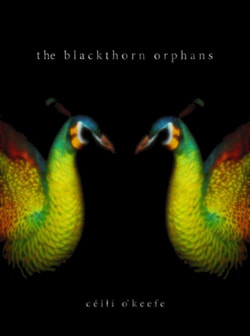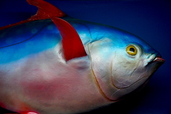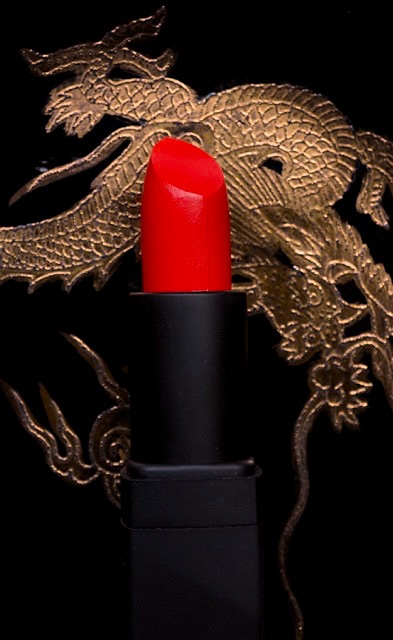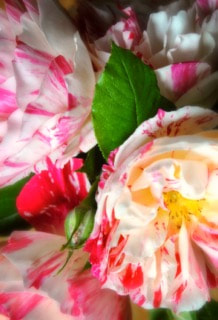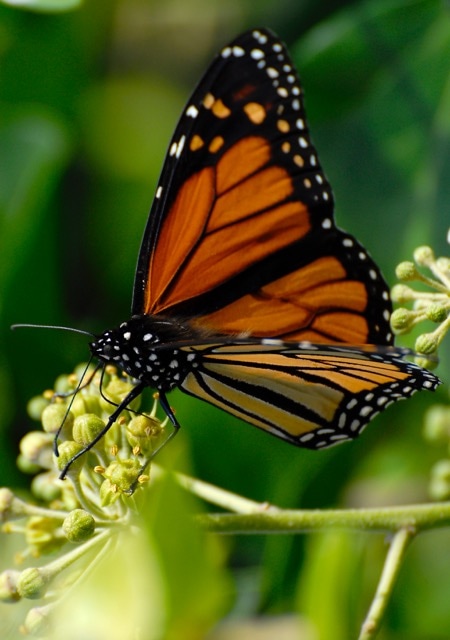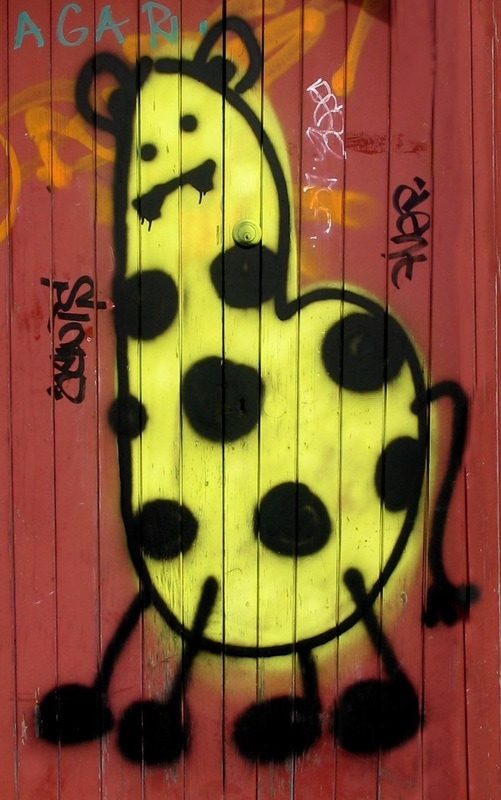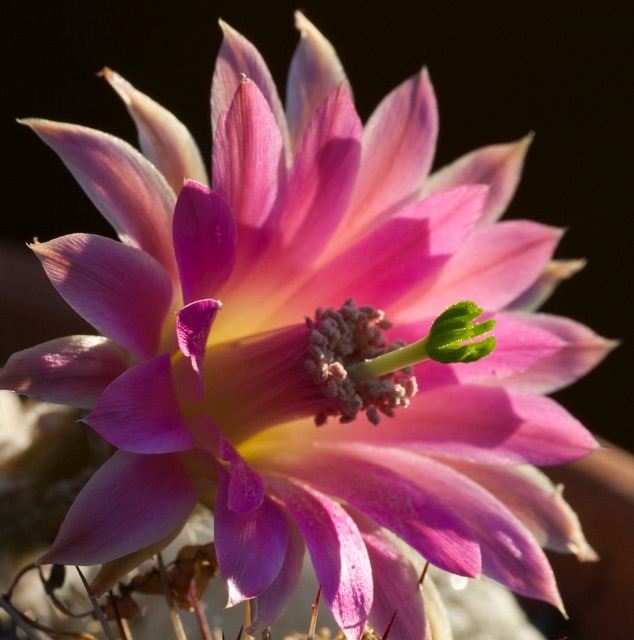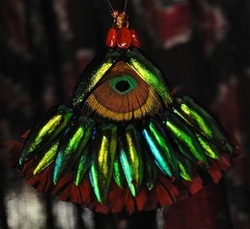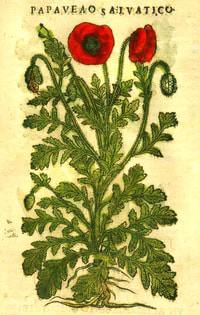| This year's inflorescence (Nov '14) is emerging in the pic overhead, along with that of the humilis x mitriformis hybrid directly behind it sporting bronzy winter-dry stress colours. | I can't for the life of me remember where I acquired this little species, but I'm glad I did. I have a lot of success with dwarf and Madagascan aloes; that is er, largely accidental and it's often only after a few years of haphazard ignoramus cultivation that I discover this or that plant is supposed to be exceedingly difficult. < Aloe humilis, the teal-green number in the foreground here is neither difficult nor Madagascan, hailing instead from the Eastern Cape region of South Africa, according to Aloes: The Definitive Guide (Kew), where it frolics amongst a landscape of low, dry scrubby bush. Humilis is apparently quite a variable species both size-wise and in growth habit, some remaining solitary, others forming dense, sprawling colonies that flower in concert and must be quite stunning when viewed in situ. My plant is a bright oceanic green with a powdery bloom that makes it look blueish. It's mature at 10cm high and wide, flowering reliably for a couple of years and now beginning to pup at the base, so this is probably max individual size for this form. |
| Left: Flower detail. These images may appear almost over-saturated, but I actually turned down the exposure in an attempt to tame the rabid lime and day glow orange blooms that are a hallmark of the species. They take a good four or so months to open from start to finish, but it's well worth the wait. Below: My humilis x mitriformis hybrid. This plant came from my favourite hobbyist supplier and it's a spiny copper and olive little monster. It was labeled 'perfoliata hybrid' which, as every plant dweeb knows, is a mysterious and exciting designation. Aloe perfoliata is a synonym for mitriformis which is probably the more accepted name. I suspected a humilis parent and though you can never be 100% sure, the similar spines, habit, timing and flower spike is proof enough for me. You can see the spike emerging in the shot below; it was about a week or so behind the humilis proper but soon caught up. Their relative sizes are demonstrated in the shot below right. |
| Neither plant gives me any trouble at all. They sit outside all year round, kept dry but unheated in winter (down to around -2ºC min) in large-grade pumice and proprietary cactus mix. They're watered about once every two weeks in summer and not at all in winter. I'm looking forward to prodigious colonies of both. | This plant enjoys the typical lizard-green, slightly suede-y skin of the Aloe mitriformis parent, with form and flower characteristics being split pretty evenly between its two progenitors (you can see the mitriformis influence in the spacing of the inflorescence to the left here) It too has begun to pup from the bottom so I presume this is its ultimate individual size. |

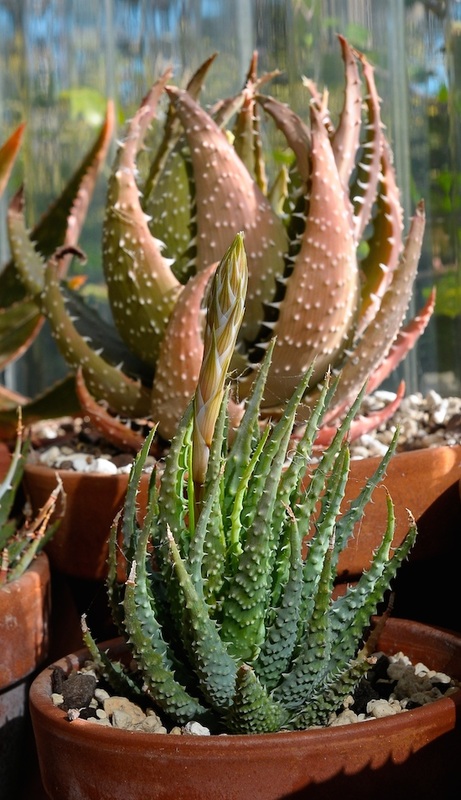
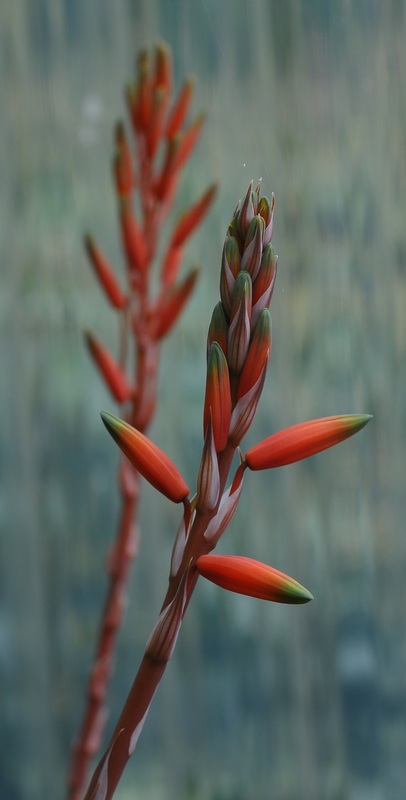
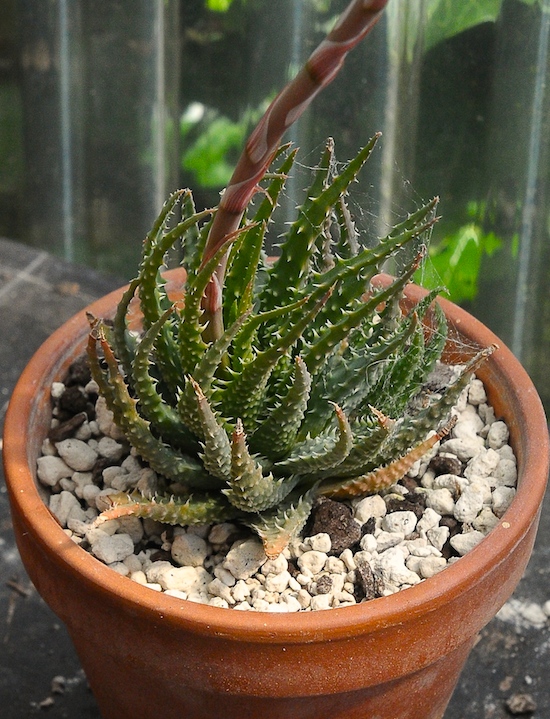
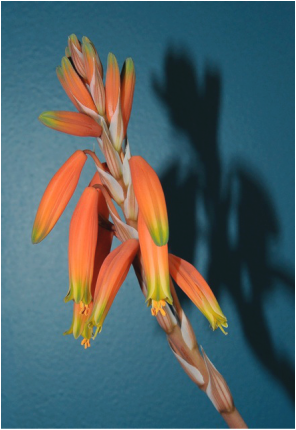
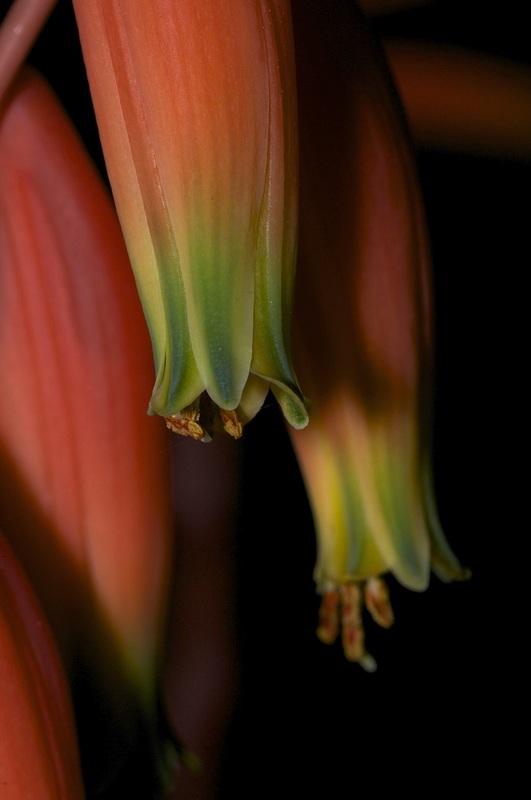
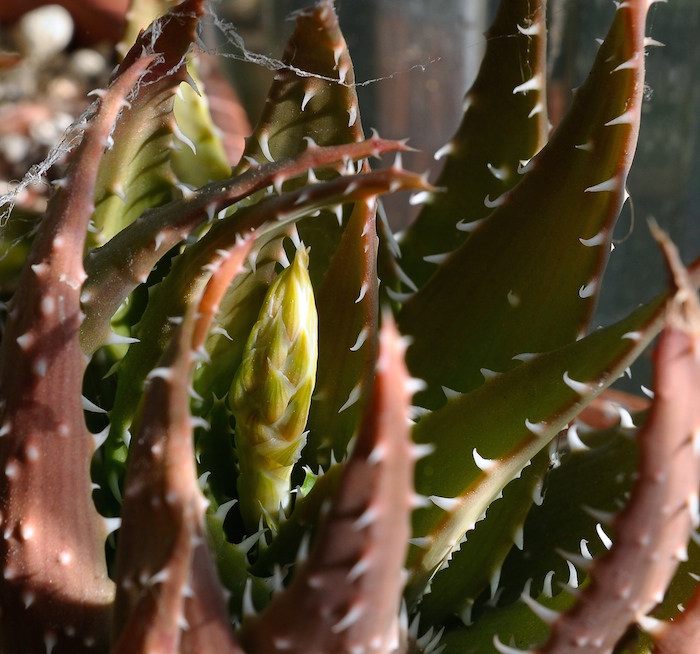
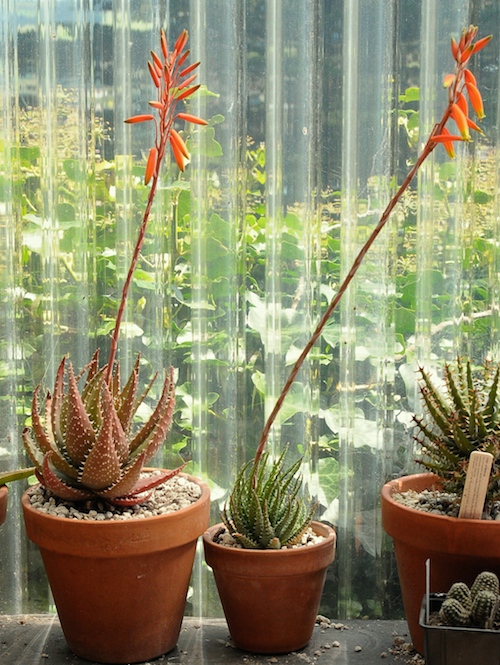
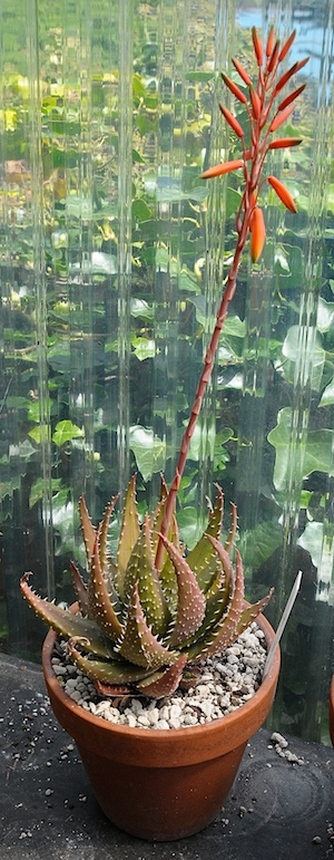
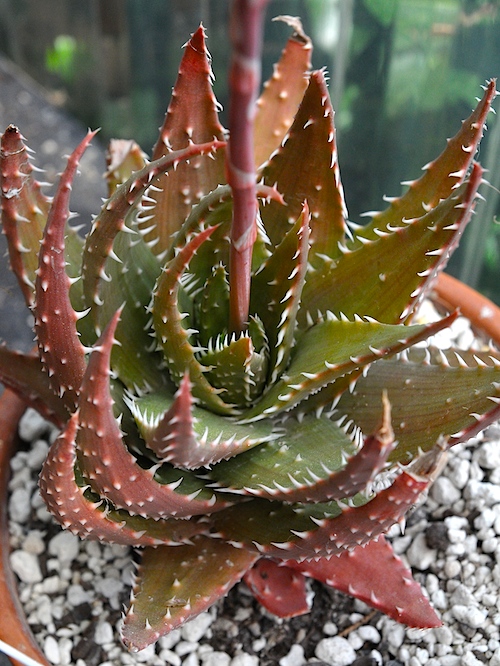
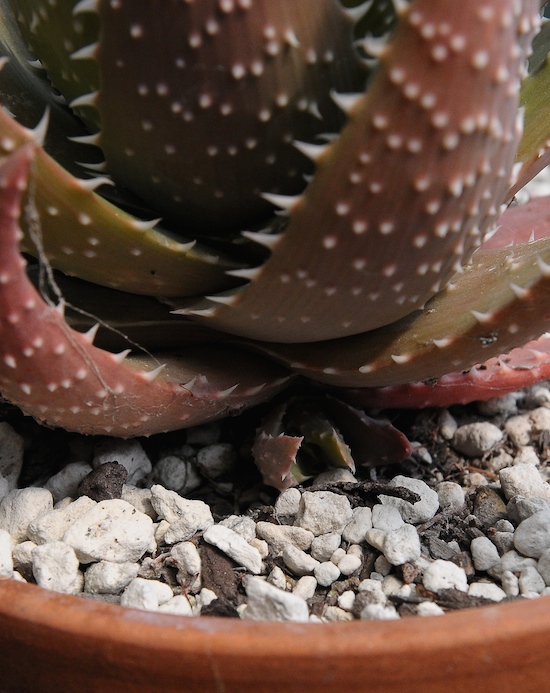
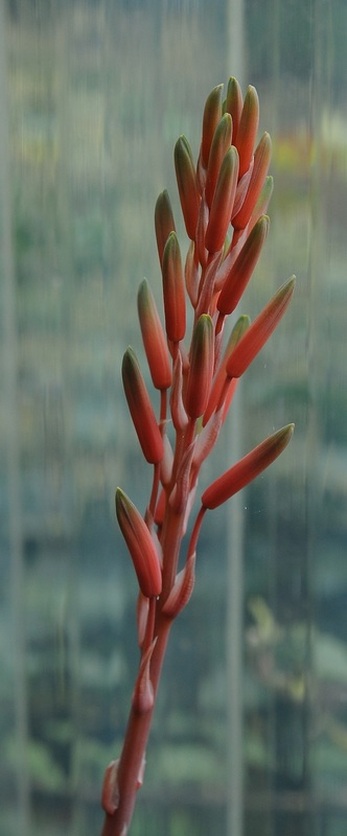
 RSS Feed
RSS Feed


